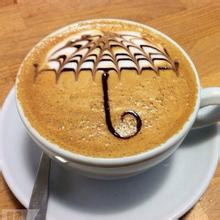Slippery taste of Bolivian coffee manor features boutique coffee beans
The legal capital, the seat of the Supreme Court, with a population of 284000, 2790 meters above sea level. Founded in 1538, the city was formerly known as Chuquisaka. In 1809, the first uprising against Spanish rule broke out in South America. Bolivia declared its independence here in 1825 and became the capital in 1826. In 1839, it was renamed Sucre in honor of the second president of Bolivia, General Antonio Jos é Sucre. In 1898, the central government, presidential palace and parliamentary hall were moved to Russ, and the Supreme Court stayed in Sucre. Sucre has been listed on the UNESCO list of cultural heritage of mankind. [5]
Santa Cruz
Founded in 1561 with a population of 2.7762 million, it is a new industrial and commercial city, the second largest economic and cultural center in the country, and the capital of Santa Cruz province. Located in the eastern plain, 437 meters above sea level, with an annual average temperature of 23.8.
Kochabamba
The third largest city in the country, the capital of Cochabamba province. Located in the river valley in central Bolivia, it is an important transportation hub. Bolivia, with a population of 1.9384 million and an altitude of 2558 meters, is a Plurinational country, mainly composed of indigenous peoples, including Indians of all ethnic groups; Mestizo: European and African immigrants and indigenous peoples
Bolivians in the market
Bolivians in the market
Mixed-race offspring (about 30% of the Bolivian population) and European and African immigrants (about 15% of the total population). According to statistics, there are 37 indigenous ethnic groups in Bolivia, of which Quechua and Ayimala have the largest population, 1.558 million and 1.279 million respectively, and Guaran 78000 has an oval shape in the middle of the Bolivian national emblem.
There are patterns of sun, mountain peak, bread tree, camel sheep and grain on the round surface. There are ten five-pointed stars in the lower half of the circle, representing the nine provinces that make up Bolivia and the coastal provinces seized by Chile; the top half is written "Bolivia" in Spanish. Three national flags are hung on each side of the oval; behind them are crossed sticks and weapons, symbolizing authority; and on the left, there is a "cap of freedom" at the top of the bar. At the top of the oval is a large vulture called the Condor, symbolizing strength and freedom. The eagle is decorated with laurel twigs and olive branches, representing the people's pride in national freedom and their desire to live in harmony with the people of other countries.
In the past, most of the coffee in Bolivia was of mediocre quality, but in recent years, the production of boutique coffee has developed rapidly, and there have been a lot of pretty good beans. In recent years, the COE (Cup ofexcellence) system, which was first implemented in Brazil, has gradually become popular. Bolivia has also introduced this system, which can stimulate the enthusiasm of coffee farmers on the one hand and improve the quality of coffee on the other. COE beans are better than regular coffee, both raw beans and roasted coffee. Bolivian coffee was actually commercially produced in the 1950s (at first coffee trees were planted around homes as fences), but the coffee industry grew rapidly in a very short time, thanks in part to the impact of the Brazilian frost in 1975, when Brazil's coffee industry was hit hard. Bolivia's coffee industry takes advantage of the rapid development of medium and low acidity, but the feeling is not monotonous, but calm and generous, soft and fresh. In the sour taste, you can even feel the sour taste of citrus fruits.
The overall taste of Bolivian coffee is rich and balanced, in addition to the beautiful sour taste, there is also a shallow chocolate flavor, smooth taste is more smooth, by contrast, the bitter taste is not obvious. The aftertaste of the coffee is very good, and the sweet taste in the mouth lingers after drinking it. The wonderful experience of this coffee makes it unforgettable that every coffee-producing country should not be ignored, because good coffee is independent of countries, and good coffee should be shared with everyone. Although Bolivian coffee is not well known, I believe that with the enthusiasm and seriousness of the people here, Bolivian coffee will be tasted and shared by more and more friends.

Important Notice :
前街咖啡 FrontStreet Coffee has moved to new addredd:
FrontStreet Coffee Address: 315,Donghua East Road,GuangZhou
Tel:020 38364473
- Prev

Introduction to Panamanian Rosa Coffee with strong floral flavor and taste characteristics
Panama is rich in forest resources and has many tree species, including valuable wood such as mahogany, cedar, teak, mahogany, and cedar. The forest area of eastern Dalian Province is the most widely distributed, but it has not been fully developed due to lack of market and for reasons such as national defense and protection of the natural ecological environment. [5] according to FAO estimates in 2010, the forest area of Panama is 4.29 million hectares, accounting for the land area.
- Next

Refreshing and sweet fruit flavor Kenyan Jinchugu coffee flavor and taste characteristics of boutique coffee
The Kenyan government takes the coffee industry very seriously, where it is illegal to cut down or destroy coffee trees. Kenyan coffee buyers are world-class high-quality coffee buyers, and no other country can grow, produce and sell coffee on a continuous basis like Kenya. All coffee beans are first purchased by the Kenya Coffee Commission, where they are identified, graded, and then on a weekly basis.
Related
- Detailed explanation of Jadeite planting Land in Panamanian Jadeite Manor introduction to the grading system of Jadeite competitive bidding, Red bid, Green bid and Rose Summer
- Story of Coffee planting in Brenka region of Costa Rica Stonehenge Manor anaerobic heavy honey treatment of flavor mouth
- What's on the barrel of Blue Mountain Coffee beans?
- Can American coffee also pull flowers? How to use hot American style to pull out a good-looking pattern?
- Can you make a cold extract with coffee beans? What is the right proportion for cold-extracted coffee formula?
- Indonesian PWN Gold Mandrine Coffee Origin Features Flavor How to Chong? Mandolin coffee is American.
- A brief introduction to the flavor characteristics of Brazilian yellow bourbon coffee beans
- What is the effect of different water quality on the flavor of cold-extracted coffee? What kind of water is best for brewing coffee?
- Why do you think of Rose Summer whenever you mention Panamanian coffee?
- Introduction to the characteristics of authentic blue mountain coffee bean producing areas? What is the CIB Coffee Authority in Jamaica?

